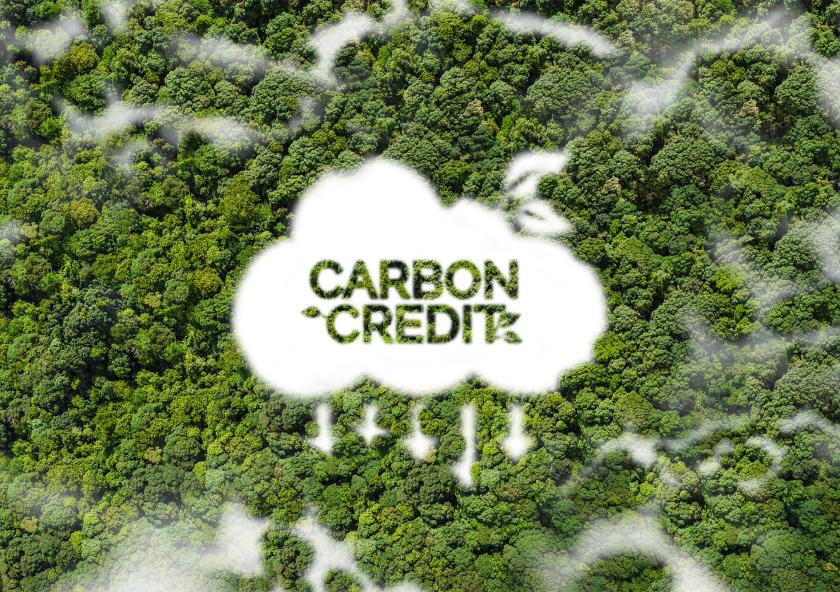
Explained: Carbon credits

One of the most contentious issues faced at the 28th Conference of Parties (COP28) on climate change last December was a proposal for a U.N.-sanctioned market for trading carbon credits. Such a mechanism would allow nations and industries making slow progress in reducing their own carbon emissions to pay others to take emissions-reducing measures, such as improving energy efficiency or protecting forests.
Such trading systems have already grown to a multibillion-dollar market despite a lack of clear international regulations to define and monitor the claimed emissions reductions. During weeks of feverish negotiations, some nations, including the U.S., advocated for a somewhat looser approach to regulations in the interests of getting a system in place quickly. Others, including the European Union, advocated much tighter regulation, in light of a history of questionable or even counterproductive projects of this kind in the past. In the end, no agreement was reached on the subject, which will be revisited at a later meeting.
The concept seems simple enough: Offset emissions in one place by preventing or capturing an equal amount of emissions elsewhere. But implementing that idea has turned out to be far more complex and fraught with problems than many expected.
For example, projects that aim to preserve a section of forest — which can remove carbon dioxide from the air and sequester it in the soil — face numerous issues. Will the preservation of one parcel just lead to the clearcutting of an adjacent parcel? Would the preserved land have been left uncut anyway? And what if it ends up being destroyed by wildfire, drought, or insect infestation — all of which are expected to become more likely with climate change?
Similarly, projects that aim to capture carbon dioxide emissions and inject them into the ground are sometimes used to justify increasing the production of petroleum or natural gas, negating the intended climate mitigation of the process.
Several experts at MIT now say that the system could be effective, at least in certain circumstances, but it must be thoroughly evaluated and regulated.
Carbon removal, natural or mechanical
Sergey Paltsev, deputy director of MIT’s Joint Program on the Science and Policy of Global Change, co-led a study and workshop last year that included policymakers, industry representatives, and researchers. They focused on one kind of carbon offsets, those based on natural climate solutions — restoration or preservation of natural systems that not only sequester carbon but also provide other benefits, such as greater biodiversity. “We find a lot of confusion and misperceptions and misinformation, even about how you define the term carbon credit or offset,” he says.
He points out that there has been a lot of criticism of the whole idea of carbon offsets, “and that criticism is well-placed. I think that’s a very healthy conversation, to clarify what makes sense and what doesn’t make sense. What are the real actions versus what is greenwashing?”
He says that government-mandated and managed carbon trading programs in some places, including British Columbia and parts of Europe, have been somewhat effective because they have clear standards in place, whereas unregulated carbon credit systems have often been abused.
Charles Harvey, an MIT professor of civil and environmental engineering, should know, having been actively involved in both sides of the issue over the last two decades. He co-founded a company in 2008 that was the first private U.S. company to attempt to remove carbon dioxide from emissions on a commercial scale, a process called carbon capture and sequestration, or CCS. Such projects have been a major recipient of federal subsidies aimed at combatting climate change, but Harvey now says these are largely a waste of money and in most cases do not achieve their stated objective.
In fact, he says that according to industry sources, as of 2021 more than 90 percent of CCS projects in the U.S. have been used for the production of more fossil fuels — oil and natural gas. Here's how it works: Natural gas wells often produce methane mixed with carbon dioxide, which must be removed to produce a marketable natural gas. This carbon dioxide is then injected into oil wells to stimulate more production. So, the net effect is the creation of more total greenhouse gas emissions rather than less, explains Harvey, who recently received a grant from the Rockefeller Foundation to explore CCS projects and whether they can be made to contribute to true emissions reductions.
What went wrong with the ambitious startup CCS company Harvey co-founded? “What happened is that the prices of renewables and energy storage are now incredibly cheap,” he says. “It makes no sense to do this, ever, on power plants because honestly, fossil fuel power plants don’t even really make economic sense anymore.”
Where does Harvey see potential for carbon credits to work? One possibility is the preservation or restoration of tropical peatlands, which he has received another grant to study. These are vast areas of permanently waterlogged land in which dead plant matter —and the carbon it contains — remains in place because the water prevents the normal decomposition processes that would otherwise release the stored carbon back into the air.
While it is virtually impossible to quantify the amount of carbon stored in the soil of forest or farmland, in peatlands that’s easy to do because essentially all of the submerged material is carbon-based. Simply measuring changes in the elevation of such land, which can be done remotely by plane or satellite, gives a precise measure of how much carbon has been stored or released. When a patch of peat forest that has been clear-cut to build plantations or roads is reforested, the amount of carbon emissions that were prevented can be measured accurately.
Because of that potential for accurate documentation, protecting or restoring peat bogs can also be a good way to achieve meaningful offsets for carbon emissions elsewhere, Harvey says. Rewetting a previously drained peat forest can immediately counteract the release of its stored carbon and can keep it there as long as it is not drained again — something that can be verified using satellite data.
Paltsev adds that while such nature-based systems for countering carbon emissions can be a key component of addressing climate change, especially in very difficult-to-decarbonize industries such as aviation, carbon credits for such programs “shouldn’t be a replacement for our efforts at emissions reduction. It should be in addition.”
Criteria for meaningful offsets
John Sterman, the Jay W. Forrester Professor of Management at the MIT Sloan School of Management, has published a set of criteria for evaluating proposed carbon offset plans to make sure they would provide the benefits they claim. At present, “there’s no regulation, there’s no oversight” for carbon offsets, he says. “There have been many scandals over this.”
For example, one company was providing what it claimed was certification for carbon offset projects but was found to have such lax standards that the claimed offsets were often not real. For example, there were multiple claims to protect the same piece of forest and claims to protect land that was already legally protected.
Sterman’s proposed set of criteria goes by the acronym AVID+. “It stands for four principles that you have to meet in order for your offset to be legitimate: It has to be additional, verifiable, immediate, and durable,” he says. “And then I call it AVID+,” he adds, the “plus” being for plans that have additional benefits as well, such as improving health, creating jobs, or helping historically disadvantaged communities.
Offsets can be useful, he says, for addressing especially hard-to-abate industries such as steel or cement manufacturing, or aviation. But it is essential to meet all four of the criteria, or else real emissions are not really being offset. For example, planting trees today, while often a good thing to do, would take decades to offset emissions going into the atmosphere now, where they may persist for centuries — so that fails to meet the “immediate” requirement.
And protecting existing forests, while also desirable, is very hard to prove as being additional, because “that requires a counterfactual that you can never observe,” he says. “That’s where a lot of squirrely accounting and a lot of fraud comes in, because how do you know that the forest would have been cut down but for the offset?” In one well-documented case, he points out, a company tried to sell carbon offsets for a section of forest that was already an established nature preserve.
Are there offsets that can meet all the criteria and provide real benefits in helping to address climate change? Yes, Sterman and Harvey say, but they need to be evaluated carefully.
“My favorite example,” Sterman says, “is doing deep energy retrofits and putting solar panels on low-income housing.” These measures can help address the so-called landlord-tenant problem: If tenants typically pay the utility bills, landlords have little incentive to pay for efficiency improvements, and the tenants don’t have the capital to make such improvements on their own. “Policies that would make this possible are pretty good candidates for legitimate offsets, because they are additional — low-income households can’t afford to do it without assistance, so it’s not going to happen without a program. It’s verifiable, because you’ve got the utility bills pre and post.” They are also quite immediate, typically taking only a year or so to implement, and “they’re pretty durable,” he says.
Another example is a recent plan in Alaska that allows cruise ships to offset the emissions caused by their trips by paying into a fund that provides subsidies for Alaskan citizens to install heat pumps in their homes, thus preventing emissions from wood or fossil fuel heating systems. “I think this is a pretty good candidate to meet the criteria, certainly a lot better than much of what’s being done today,” Sterman says.
But eventually, what is really needed, the researchers agree, are real, enforceable standards. After COP28, carbon offsets are still allowed, Sterman says, “but there is still no widely accepted mandatory regulation. We’re still in the wild West.”
Paltsev nevertheless sees reasons for optimism about nature-based carbon offset systems. For example, he says the aviation industry has recently agreed to implement a set of standards for offsetting their emissions, known as CORSIA, for carbon offsetting and reduction scheme for international aviation. “It’s a point for optimism,” he says, “because they issued very tough guidelines as to what projects are eligible and what projects are not.”
He adds, “There is a solution if you want to find a good solution. It is doable, when there is a will and there is the need.”

